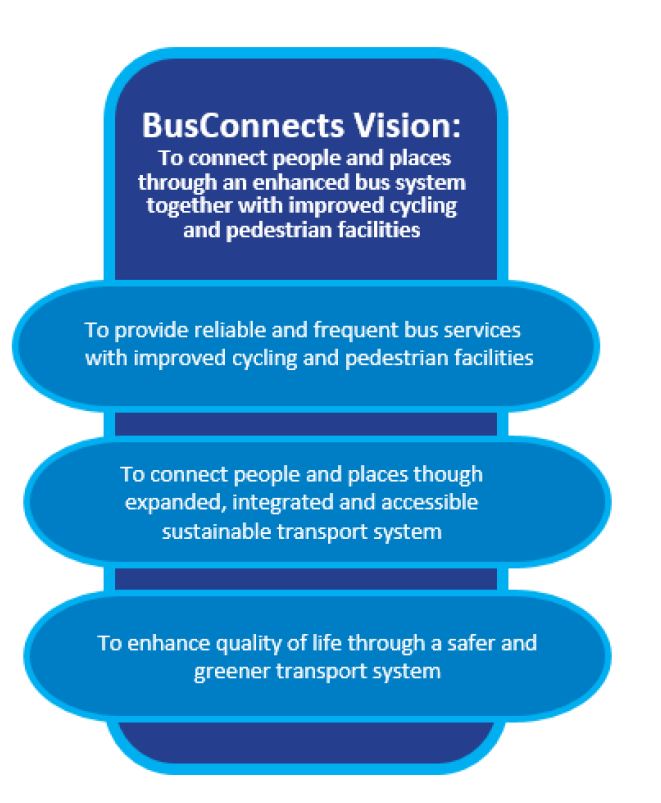The BusConnects Programme is a strategic national-level intervention aimed at enhancing sustainable transportation across five regions in Ireland—Dublin, Cork, Limerick, Galway, and Waterford. The broad geographical coverage and comprehensive approach of the Programme underscore its potential nationwide impact and demonstrate the concerted efforts of these regions in advancing sustainable urban mobility agendas. The vision of the BusConnects Programme is to connect people and places through an enhanced bus system together with improved cycling and pedestrian facilities. BusConnects is a key part of the Government’s polices to improve public transport and address climate change in Ireland’s major urban centres. BusConnects is a program developed and managed by the National Transport Authority (NTA), and funded by Project Ireland 2040.
The scale and transformative potential of the BusConnects Programme reinforces its central role in influencing the future roadmap of Ireland’s transport system. It delivers on commitments within the National Development Plan 2021-2030, the Transport Strategy for the Greater Dublin Area 2022-2042, the Climate Action Plan 2023 and the National Planning Framework 2040.
The BusConnects Dublin Programme is the most advanced of the BusConnects Programmes across the country. Many of the benefits of BusConnects Dublin identified in the Preliminary Business Case (PBC) require implementation of all projects before benefits can be fully realised. For example, the implementation of the 12 Core Bus Corridor schemes will greatly improve the reliability and punctuality of the bus services along these corridors as they remove buses from traffic congestion through the provision of bus lanes or other priority arrangements. Realisation of the Programme’s benefits will be tracked as each project is implemented to ensure confidence that all benefits can and will be realised upon Programme completion.
BusConnects includes nine initiatives:
- Redesigning the bus network
- Building new bus corridors and cycle lanes
- Implementing a state of the art ticketing system
- Implementing a cashless payment system
- Simpler fare structure
- New bus livery
- New bus stops and shelters
- New Park & Ride sites in key locations
- Transitioning to a new zero emissions bus fleet
Information on BusConnects initiatives in each city can be found on the cities pages.
